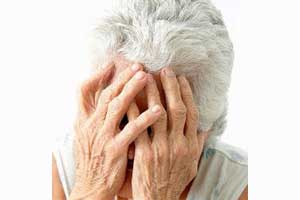- Home
- Editorial
- News
- Practice Guidelines
- Anesthesiology Guidelines
- Cancer Guidelines
- Cardiac Sciences Guidelines
- Critical Care Guidelines
- Dentistry Guidelines
- Dermatology Guidelines
- Diabetes and Endo Guidelines
- Diagnostics Guidelines
- ENT Guidelines
- Featured Practice Guidelines
- Gastroenterology Guidelines
- Geriatrics Guidelines
- Medicine Guidelines
- Nephrology Guidelines
- Neurosciences Guidelines
- Obs and Gynae Guidelines
- Ophthalmology Guidelines
- Orthopaedics Guidelines
- Paediatrics Guidelines
- Psychiatry Guidelines
- Pulmonology Guidelines
- Radiology Guidelines
- Surgery Guidelines
- Urology Guidelines
Anxiety in postmenopausal women linked to fracture risk

Post-menopausal women with high level of anxiety are more prone to poor bone health that increases the risk of fractures, according to a new study published in the journal Menopause.
The study was conducted by Antonino Catalano, Department of Clinical and Experimental Medicine, University Hospital of Messina, Messina, Italy, and colleagues to investigate the role of severity of anxiety in bone health.
Anxiety is as common among the old as among the young. Generalized anxiety disorder is the most common anxiety disorder among older adults, anxiety disorders in this population are frequently associated with traumatic events such as a fall or acute illness. There has been increasing interest in the association of psychiatric disorders with fracture risk.
For the study, multiple clinical risk factors for fractures, the Fracture Risk Assessment Tool score, the bone mineral density (BMD) at the lumbar spine and femoral neck, Hamilton Anxiety Rating Scale (HAMA) scores, Beck Depression Inventory scores, and the 36-Item Short Form Health Survey (SF-36) scores for evaluation of the quality of life were determined, and x-ray vertebral morphometry was carried out in postmenopausal women referred for osteoporosis.
Key Findings:
- Of the 192 women recruited (mean age 67.5 ± 9.5 years), participants allocated to the tertile of the lowest HAMA scores (HAMA-1) showed a lower probability of fracture than did participants with the highest scores (HAMA-3), and the same trend was observed when comparing the HAMA-2 and HAMA-3 tertiles.
- Women in the HAMA-3 group exhibited lower lumbar T-score values in the lumbar spine than did women in the HAMA-1 group and a lower T-score value in the femoral neck.
- Lower T-score values were observed in HAMA-3 than in HAMA-2.
- A higher prevalence rate of vertebral fractures was observed in HAMA-3 than in HAMA-1, but the difference was not significant.
- Anxiety levels were significantly related to age, menopausal age, years since menopause, and depressive symptoms, and a multiple regression analysis was predictive of reduced BMD in the lumbar spine
"In postmenopausal women, anxiety levels were associated with reduced BMD in the lumbar spine and femoral neck," concluded the authors.
For more information click on the link: 10.1097/GME.0000000000001123

Disclaimer: This site is primarily intended for healthcare professionals. Any content/information on this website does not replace the advice of medical and/or health professionals and should not be construed as medical/diagnostic advice/endorsement or prescription. Use of this site is subject to our terms of use, privacy policy, advertisement policy. © 2020 Minerva Medical Treatment Pvt Ltd